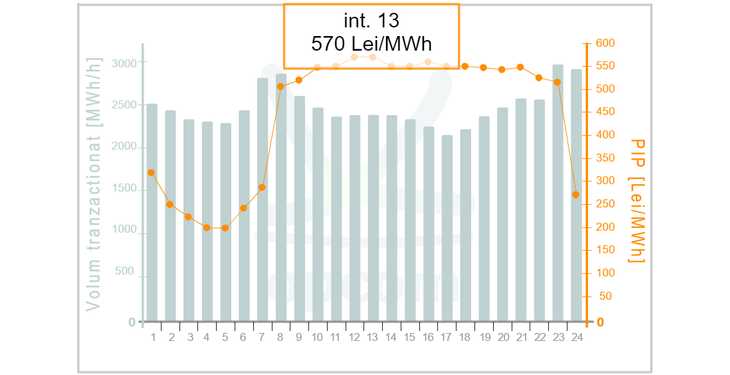The first days of August brought new maximum levels for electricity prices on the spot market (DAM – Day Ahead Market) – 570 lei / MWh, with an average price of 550 lei / MWh OPCOM for Friday, August 4th. Compared to August 1st, the average price on DAM increased, in three days, with about 67%, while over the same period last year, prices are almost three times higher.
This situation has sparked a broad public debate in which central authorities (Ministry of Energy) and regulators (ANRE Competition Council) partook along with other players in the market (suppliers and traders), independent experts, politicians and the general public.
The peril of interventionism
As expected, appeals to ANRE to intervene in the market intensified. This is a call to action in order to help reduce the prices. Attacks on generating companies, traders and suppliers also amplified.
“Nothing for the Romanian consumer” (Gabriel Dumitraşcu, post on Facebook, August 3rd)
“This is the result of a poorly regulated free market”, (Cristian Socol, post on Facebook, August 3rd)
“We talked several times with ANRE, we requested them to propose any solution, a government decision, a cap …” Toma Petcu, Minister of Energy (link)
“I feel like a want to propose higher taxation for PZU profits ” (Gabriel Dumitraşcu, post on Facebook, August 3rd)
Regulators have been analyzing this situation for months now and they insist that the market works properly and prices reflect relevant market conditions: high demand (1,000 MWh more than in the same period last year, said the Ministry of Energy) and a smaller offer than in other periods caused by lower generation from hydrocarbons, hydro and renewables. “The price increase is normal in these circumstances. This reaction of the market is considered a good thing. If only the market wouldn’t react under such conditions, then we’d have had a problem”, declared recently Natalia Vlad, general director for Electricity Market within ANRE in a debate organized by energy-center.
Solutions from legislation and regulation
In 2017, the situation of the electricity market revealed that it have become mandatory for all involved parties to adapt their strategies, consumers included, by means of a better management of their energy use and through an active and informed hunting of the best deals available. Households are far from this level of sophistication, but we find the same situation to consumers such as institutions (hospitals, schools, municipalities etc).
Suppliers and traders are also in the process of learning and adapting to new conditions, by using all the tools that are offered by the market.
The legislator (Parliament and Government) and the regulatory body (ANRE) are also facing essential decisions regarding the reintroduction of bilateral contracts, approving more advanced market instruments (forward contracts, hedging mechanisms etc), an analysis of the obligations imposed on producers from the renewable resources sector, a redesign of the conditions in the CMUS (Centralized Market for Universal Service), an analysis of the impact of some practices, criticised, but still unconfirmed, such as “buying-selling offerings for the same time interval proposed simultaneously by the same participant, in order to increase the closing price on DAM” (Andreea Paul) etc.
“It is not normal for the spot market to identify with the whole exchange. It is the obligation of the regulator and OPCOM’s to make long-term bilateral contracts market more attractive” (Claudia Pârvoiu, post on Facebook, August 3rd)
“If the ministry [of Energy] and ANRE would unlock investment in energy storage, the market would look completely different. Flattening the load curve and securing a balanced energy mix are basic objectives of the smart grid concept established by the Action Plan approved by Ministerial Order 2081/2010 (!!!). Unfortunately, all activities are blocked. ” (Călin Vilt, post on Facebook, August 4th)
“It is all about regulation. Rather than lowering the prices, the producers of green energy put pressure on prices, because the regulations force them to buy energy for intervals when there is no wind and no solar energy available. ” (Martin Moise vicepresident PATRES) (link)
The impact of price increase
If the situation remain unchanged on a medium term, final prices will keep rising and they will put significant pressure on power suppliers. On the other hand, producers will benefit and, at least theoretically, they will be in the position to start investments that would reinforce their available generating capacities and their flexibility, which will strengthen the national energy system, and this might, on a long-term, help in stabilizing the prices.
At the same time, we must be realistic: with an energy system which is old, inflexible and isolated from other energy markets, the prices will be increasing in the years and decades to come, at least as long as technological promises such as storage and solutions for distributed generation will not become current realities.
“Who wants these outrageous profits? Who wants to take money out of consumers’ pockets by force and kneel down the industry?” (Gabriel Dumitraşcu, post on Facebook, August 3rd)
Such approaches are likely to turn into hasty administrative measures with even more serious impact on a medium and long term. Romania already has a long history of economic protectionism and social benefits implemented by administrative prices for the final consumers. With great efforts and guilty delays, the energy market is now in the most favorable legislation and regulatory framework ever, because, more than ever, the market provides fair price-signals which are essential to correctly assessing the contribution of each energy producer, to adopting realistic healthy energy efficiency behaviors (from industry to households), but also to underpin investment decisions in the generation sector.
“These theories which state that someone has conspired with someone else and – look!, somebody seeks to maximize the profits… these are rubbish and pleas for changing a company’s (even a state-owned one’s) objective, from making profit to social protection”(Petronel Chiriac, post on Facebook, August 3rd)
Let’s not forget that for decades, the major manufacturers (Hidroelectrica, Nuclearelectrica, thermo plants) were decapitalized and discouraged to invest by lower sale prices imposed, and this also discouraged major investors to enter the market. Romania’s energy mix is diverse and has, so far, proved to be robust and flexible, but it is far from optimal, and it urgently needs a reset in order to meet the challenges ahead (environmental obligations, regional interconnectivity, the rise of prosumers, the end of some large generation capacities lifetime etc). A fair price for energy, established by free market mechanisms, is essential for our future safety, comfort and welfare.

